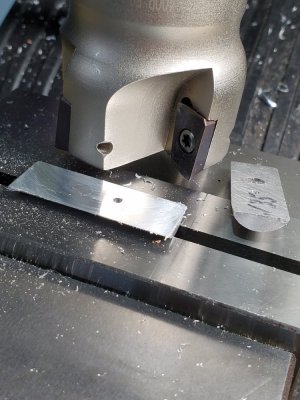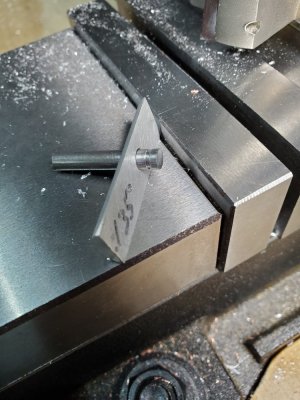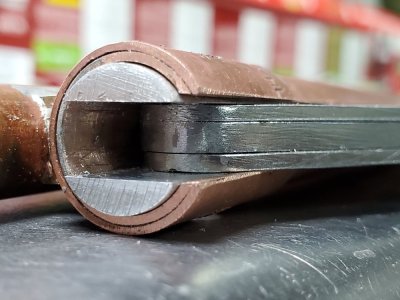DPittman
Ultra Member
I had to take off about another 40 thousands of inch on the thickness of these little half moon shape spacers. I had done some hand filing but was getting crooked on them (and tired) and they needed to be fairly accurate.
I couldn't figure out any other way to hold them to skim off some material with the mill.

 View attachment 11826
View attachment 11826


 View attachment 11826
View attachment 11826 There was an existing 3/16 hole in the pieces already and I used loctite to hold a small piece of rod in the hole which I could then clamp onto with the vise.
There was an existing 3/16 hole in the pieces already and I used loctite to hold a small piece of rod in the hole which I could then clamp onto with the vise.
Pictures will explain what I did better.
I knew it was risky but didn't figure I would ruin anything other than the part if it didn't work. It worked like a charm. I took only maximum 10 thou cut at a time cuz I was scared to bugger it all up. I think the reason it worked is because pretty much all the pressure was down ward across the face of the piece evenly.
The part is for a moving cocking mechanism on an air rifle.
I couldn't figure out any other way to hold them to skim off some material with the mill.


 View attachment 11826
View attachment 11826


 View attachment 11826
View attachment 11826 There was an existing 3/16 hole in the pieces already and I used loctite to hold a small piece of rod in the hole which I could then clamp onto with the vise.
There was an existing 3/16 hole in the pieces already and I used loctite to hold a small piece of rod in the hole which I could then clamp onto with the vise.Pictures will explain what I did better.
I knew it was risky but didn't figure I would ruin anything other than the part if it didn't work. It worked like a charm. I took only maximum 10 thou cut at a time cuz I was scared to bugger it all up. I think the reason it worked is because pretty much all the pressure was down ward across the face of the piece evenly.
The part is for a moving cocking mechanism on an air rifle.
